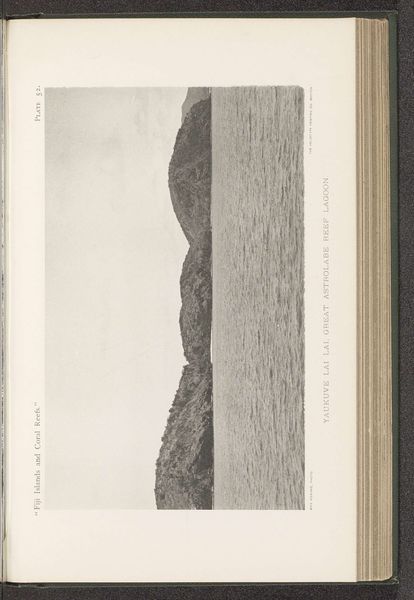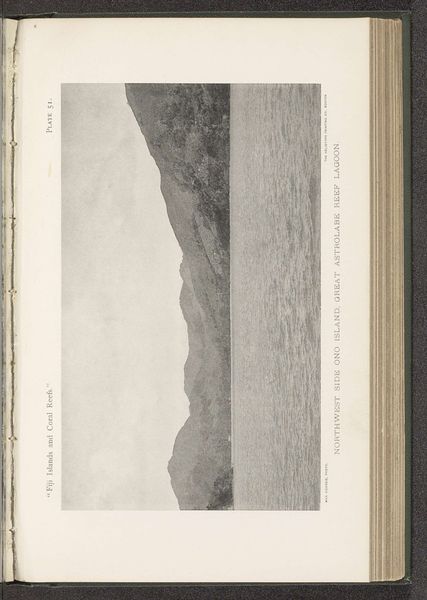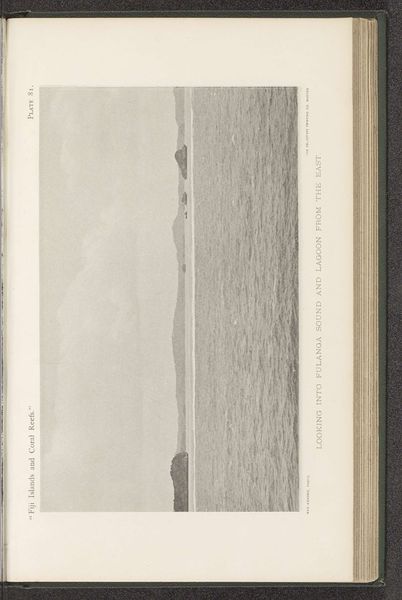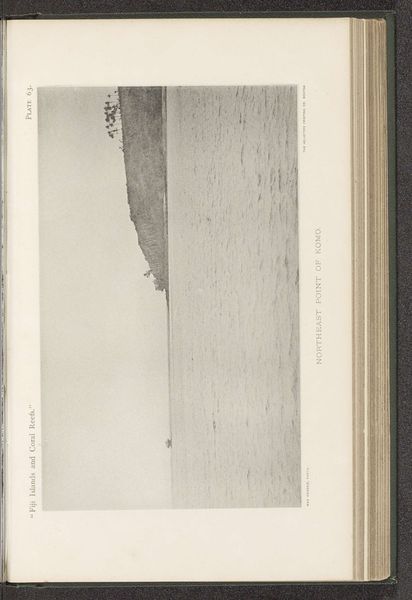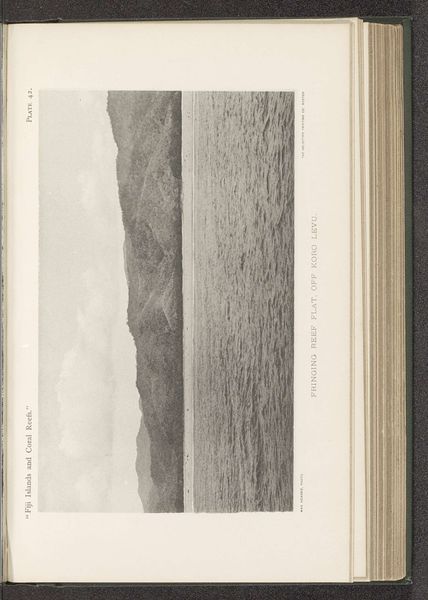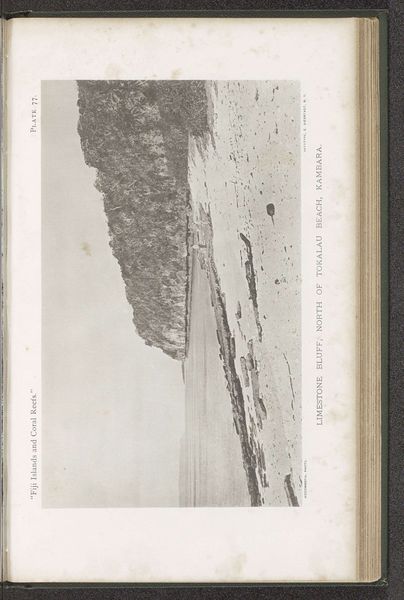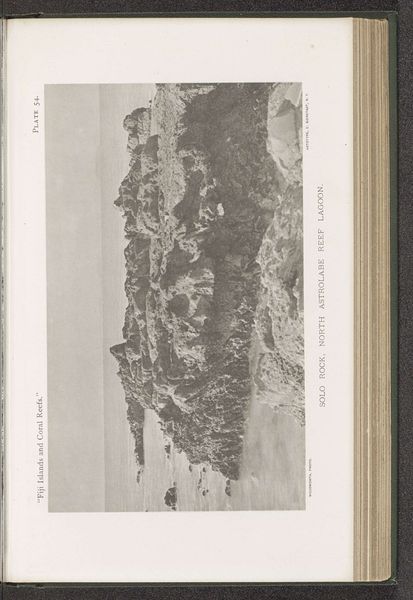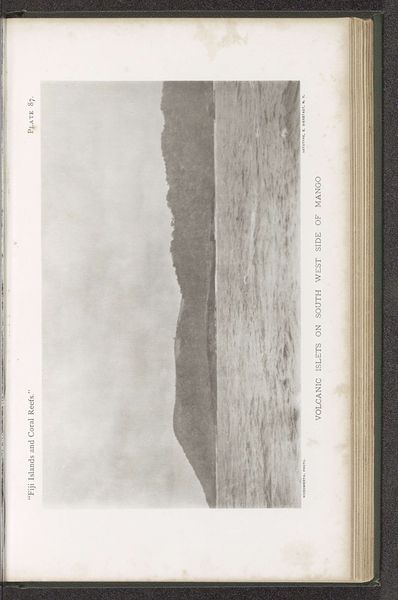
print, photography
#
paper non-digital material
# print
#
landscape
#
photography
#
ocean
Dimensions: height 108 mm, width 179 mm
Copyright: Rijks Museum: Open Domain
Curator: Let's turn our attention to this striking monochrome print titled "Gezicht op een kraterbekken in de zee bij Totoya," dating from before 1899, credited to Maximilian Agassiz. The Dutch title translates to "View of a crater basin in the sea near Totoya." Editor: It has such a still, almost dreamlike quality to it, even with the vastness of the sea. The subdued tonal range evokes a certain melancholy, as though time is suspended. The way the light catches the water… almost mesmerizing. Curator: The photograph presents a wide, horizon-dominated vista. We see the rim of a volcanic crater descending into the sea, shaping a small island. This composition immediately invites exploration of themes like isolation, the powerful forces of nature, and humanity's place within them. There’s a symbolic contrast between the land's firmness and the water's mutability, both literally crashing against one another here. Editor: Absolutely, and if you factor in that islands were often represented in colonial imagery to suggest exoticized remoteness or vulnerability… who's gazing at the island and for what reasons? Even in a seemingly 'neutral' landscape, power dynamics are inherent. It becomes less a simple seascape and more a landscape weighted by a historical gaze, particularly from a Western, imperial perspective, especially given its era. Curator: Precisely. What fascinates me is the lack of overt symbolism while subtly drawing forth primordial ideas - an island archetype within a caldera suggesting geological forces and perhaps the earth goddess within a symbolic island "womb". The crater transforms this geographical view into an emblem, inviting the beholder to contemplate themes of renewal after destruction. Editor: That tension between destruction and renewal really resonates when considered alongside the socio-political realities of the region at that time. This 'natural' vista can easily become intertwined with ideas of exploitation of resources and colonial impositions, revealing how even landscapes can carry coded narratives. Curator: This image is indeed dense, urging consideration far beyond surface appearances and its objective "view", with nature as an emblem of wider questions about power and vulnerability. Editor: It really leaves you questioning not just what you're seeing, but also why and whose perspective we're actually experiencing.
Comments
No comments
Be the first to comment and join the conversation on the ultimate creative platform.
